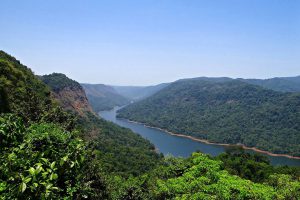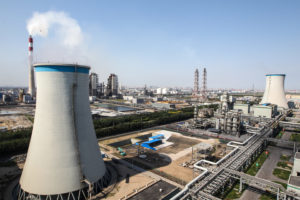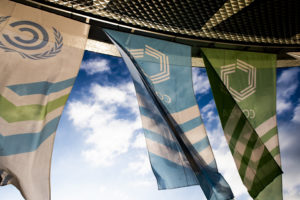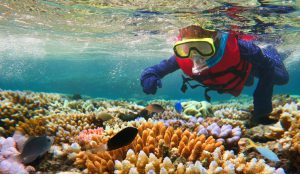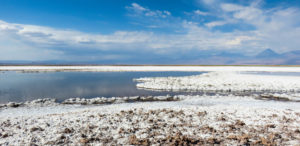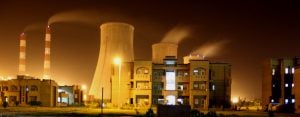The National Centre for Polar and Ocean Research (NCPOR) in Goa hosted a discussion on November 20 between the leading decisionmakers of Norway and India on research in the polar regions. The participants included the Norwegian Ambassador to India Nils Ragnar Kamsvåg, the Secretary of the Indian Ministry of Earth Sciences M. Rajeevan, the Director of NCPOR M. Ravichandran, the research director of the Norwegian Polar Institute, Nalân Koç, the Director of the Indian Council of Scientific and Industrial Research’s National Institute of Oceanography Sunil Singh and Special Advisor to the Research Council of Norway Jon Børre Ørbæk.
This discussion was part of a broader conference organised by NCPOR, the Norwegian Embassy in India, and the European Union on research collaboration. Norway and India have partnered with each other since the late 1980s to study the changing conditions in the Arctic and the Antarctic, and how they affect South Asia. The robust partnership has deepened over the years, and as climate change ends up more deeply affecting the Arctic and the South Asian monsoon, these efforts have accelerated over time.
Excerpts from conversations with some of the key participants:
Omair Ahmad (OA): Why is this cooperation between India and Norway ‘special’? What are the things you are most proud of achieving with it?
Nils Ragnar Kamsvåg: What I find most inspiring is the breadth of cooperation. We have had more than 100 research projects, many of them ongoing. This requires the cooperation of many different institutions in both countries. The application of science is particularly important, such as partnership with the Indian government in some programmes to deal with neo-natal and maternal healthcare.
M. Rajeevan: For India it is particularly important how strong this relationship is. We have had a host of training programmes, and the Ministry of Earth Sciences funded two Indian PhD students to work as scientists with the NPI, and we hope to send two more soon.
![The Norwegian Ambassador to India Nils Ragnar Kamsvåg and the Secretary of the Indian Ministry of Earth Sciences M. Rajeevan discus research collaboration [image courtesy: Norwegian Embassy in India]](https://dialogue.earth/content/uploads/2018/12/DSC_3306.jpg)
Nalân Koç: The cooperation with India is a two-way street for Norway. We are able to combine our forces, such as in Antarctica. The impact of climate change does not stay in the Arctic [where it is most visible], and we need to know more.
Sunil Singh: There is a great deal we still need to learn about teleconnection [the linkage between the melting of the Arctic and its impact on the Himalayan glaciers]. The Himalayan glaciers are difficult to study, but glaciers act in similar ways, so studying the Arctic helps us understand how seismicity and snow movement might occur in our region. This is very important for us in India to understand.
Jon Børre Ørbæk: For me this brings together the best scientists from both countries. There are many linkages that can be found. We are both marine countries, and you cannot ignore this.
OA: How closely is the impact of global warming in the Arctic and in South Asia connected?
M. Ravichandran: We are still studying the teleconnection closely, although more information on this has emerged recently. There seems to be a strong linkage between what happens in the Arctic and the Himalayan region. But this is not the whole of our research. By understanding our past, which we can do by examining ice cores, for example, we get a better understanding of the present, and can create better scientific models to understand what is happening.
See: Interview: How Arctic ice melt affects the monsoon
Sunil Singh: The correlation between less and more ice in the Arctic is very close with how the monsoon behaves. Just as we know that the El Nino effect [unusually warm ocean temperatures in the Equatorial Pacific] has a global effect on weather patterns, including the Indian monsoon, we are learning that the Arctic ice also has a significant effect.
OA: Where is the cooperation between the two countries going?
Nils Ragnar Kamsvåg: Both Norway and India are interested in promoting a Blue Economy – the sustainable development of the oceans to create jobs and livelihoods. The Norwegian Prime Minister is due to visit soon, and these issues – healthy oceans, the Clean Ganga project – are ones we hope to cooperate on. Our first project with India was a fisheries project in 1952 in Kerala. Both our strengths in meteorology and oceanography are driven by the fact that we have very big fishing fleets. This is the applied research that I mentioned. We have also managed to cooperate with Russia, both during the Cold War and afterward, to maintain the only sustainable cod stock in the world. These are areas that India is also prioritising.
M. Rajeevan: There are a number of things India needs, whether to understand how to give better fishing advisories or to explore deep ocean mining. We have a 75,000 square kilometre area in the Central Indian Ocean that we want to understand better. The Ministry of Earth Sciences will be cooperating with the Indian Space Research Organisation to create a manned submersible which we can send down 6,000 metres. For these ventures we need reliable partners who have an expertise in oceanography.
OA: How has the current attitude of the US federal government to climate change and global cooperation affected these partnerships?
Jon Børre Ørbæk: You cannot manage the oceans without data, and the US is number one when it comes to publishing research, as well as earth observation. These efforts require governments to invest since it is hard for research organisations to marshal such funds. In these times scientists need to stick together. There is a lot of institute-to-institute cooperation, and that is continuing.
Nalân Koç: As you can see, we are starting a new Arctic project with many partners from across the world. Global challenges need cooperation, since global patterns of weather are connected.
M. Ravichandran: Fifty per cent of the funding for ARGO [the global array of temperature/salinity profiling floats in the oceans] comes from the US, so it is important what the country does.
M. Rajeevan: Observational data is critical, and much of the data in the IPCC reports over the last ten years has come from US sources.
Nils Ragnar Kamsvåg: Funding has grown, though, over the last few years. Tremendously. What was once considered esoteric research is now very important, and climate change impacts have raised the value of this research globally on the agenda.
OA: Where does China figure in this new funding for climate research and cooperation?
Nils Ragnar Kamsvåg: Much has changed in the last 20 years. Global warming is as much of a challenge to China as it is for everybody else, and they have invested now in a lot of long-term research. It is also important to note that the Chinese have essentially abided by the Law of the Sea in the Arctic. It is full of resources, without clear borders, but we are being able to manage this cooperatively and peacefully. The Arctic has set an example of how we can cooperate.
M. Rajeevan: China is doing very well. Ten years ago they were nowhere on the ocean science research space, and now they are number two in published articles. On paper we have cooperated with them, but I cannot say much about our interaction.
M. Ravichandran: China is investing resources at one order higher than India. Where we are putting one person, they are putting ten. The same holds for funding for research.
Nalân Koç: China has really become an actor in this field. They are building capacity in China, especially by bringing back and employing Chinese students trained in the US. They now have an annual cruise to the Arctic. Next year they will do so with their new – their second – icebreaker. The question is how to use this for the global good. They have a hugely ambitious three poles project, with the Arctic, Antarctic and the Himalayas. With the Belt and Road Initiative, there are also commercial interests.
Jon Børre Ørbæk: The Chinese Arctic strategy has been very friendly, based on the Law of the Sea, and they have used science as diplomacy. China now also has the largest educational research system in the world, and this comes across with the work they are now putting up.
Read: Can India learn from Norway’s ocean management plan
Read: India-Norway climate cooperation offers hope for us all
![<p>From left to right: the Norwegian Ambassador to India Nils Ragnar Kamsvåg, the Secretary of the Indian Ministry of Earth Sciences M. Rajeevan, the Director of NCPOR M. Ravichandran,the Director of CSIR’s National Institute of Oceanography Sunil Singh, the research director of the Norwegian Polar Institute, Nalân Koç, and Special Advisor to the Research Council of Norway Jon Børre Ørbæk [image courtesy: Norwegian Embassy in India]</p>](https://dialogue.earth/content/uploads/2018/12/DSC_3311.jpg)

